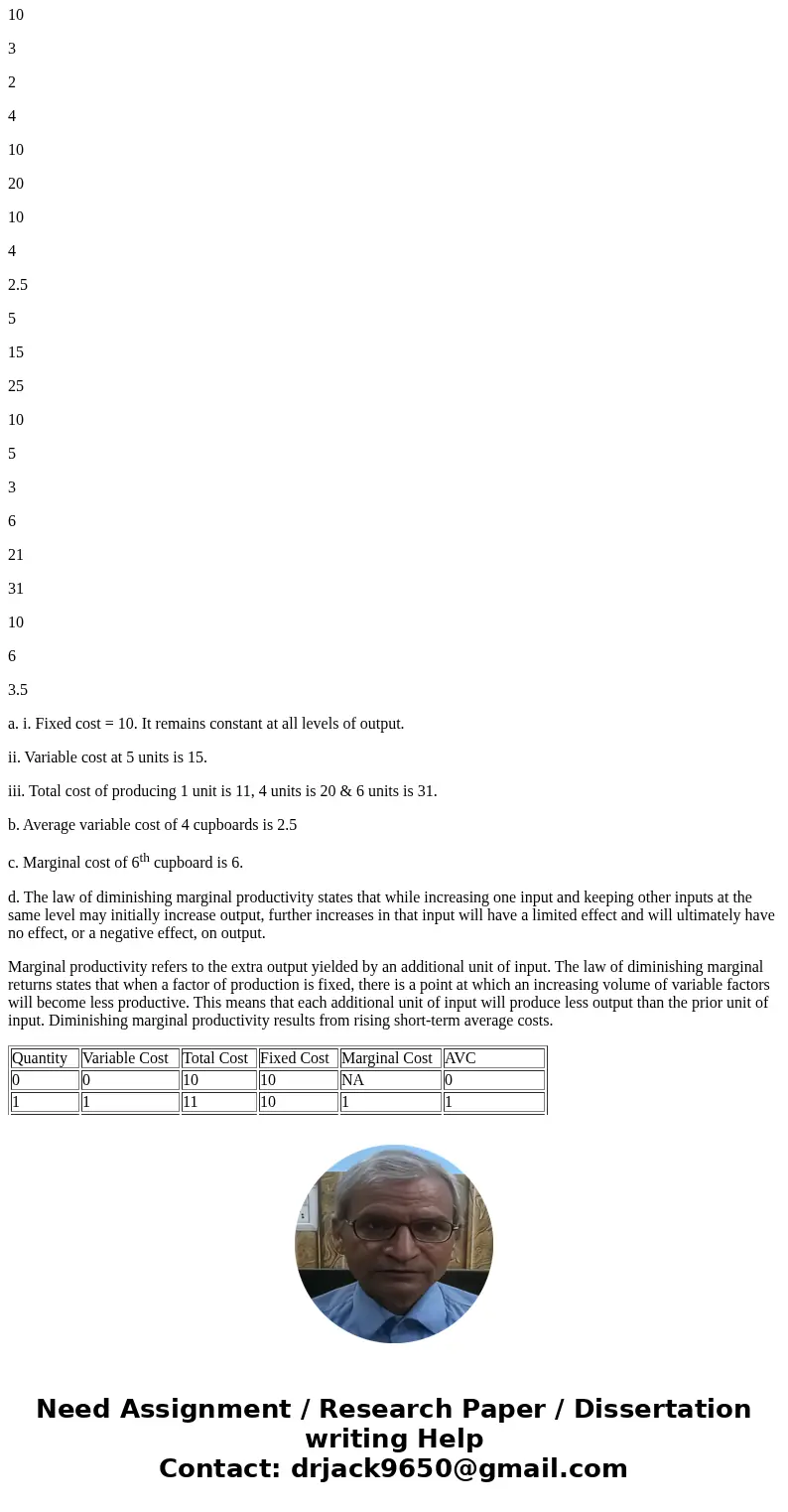Suppose that Alibaba Teak factory produces handcrafted cupbo
Solution
Quantity
Variable Cost
Total Cost
Fixed Cost
Marginal Cost
AVC
0
0
10
10
NA
0
1
1
11
10
1
1
2
3
13
10
2
1.5
3
6
16
10
3
2
4
10
20
10
4
2.5
5
15
25
10
5
3
6
21
31
10
6
3.5
a. i. Fixed cost = 10. It remains constant at all levels of output.
ii. Variable cost at 5 units is 15.
iii. Total cost of producing 1 unit is 11, 4 units is 20 & 6 units is 31.
b. Average variable cost of 4 cupboards is 2.5
c. Marginal cost of 6th cupboard is 6.
d. The law of diminishing marginal productivity states that while increasing one input and keeping other inputs at the same level may initially increase output, further increases in that input will have a limited effect and will ultimately have no effect, or a negative effect, on output.
Marginal productivity refers to the extra output yielded by an additional unit of input. The law of diminishing marginal returns states that when a factor of production is fixed, there is a point at which an increasing volume of variable factors will become less productive. This means that each additional unit of input will produce less output than the prior unit of input. Diminishing marginal productivity results from rising short-term average costs.
| Quantity | Variable Cost | Total Cost | Fixed Cost | Marginal Cost | AVC |
| 0 | 0 | 10 | 10 | NA | 0 |
| 1 | 1 | 11 | 10 | 1 | 1 |
| 2 | 3 | 13 | 10 | 2 | 1.5 |
| 3 | 6 | 16 | 10 | 3 | 2 |
| 4 | 10 | 20 | 10 | 4 | 2.5 |
| 5 | 15 | 25 | 10 | 5 | 3 |
| 6 | 21 | 31 | 10 | 6 | 3.5 |



 Homework Sourse
Homework Sourse